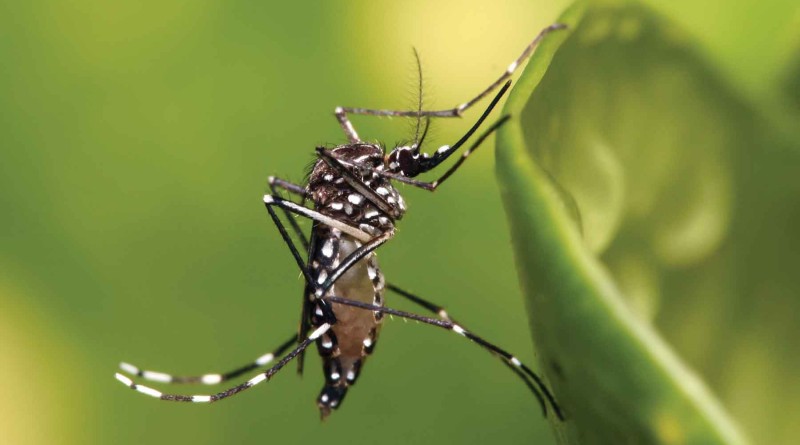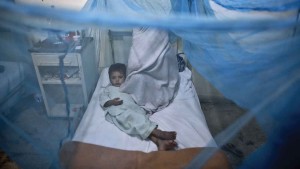Dangerous Dengue
There is a crying need for integrated preventive methods to tackle the menace of dengue that has spread its roots in the country
By Team Double Helical
Dengue is a mosquito borne viral disease that has rapidly spread in all member countries of World Health Organisation (WHO) in recent years. Dengue virus is transmitted by female mosquitoes mainly of the species Aedes aegypti and, to a lesser extent, A. albopictus.
The disease is widespread throughout the tropics, with local variations in risk influenced by rainfall, temperature and unplanned rapid urbanization. Dengue viruses can cause a wide variety of clinical illnesses ranging from mildly symptomatic dengue fever (DF) to more dangerous clinical conditions with capillary leakage syndrome such as dengue shock syndrome (DSS) and dengue hemorrhagic fever (DHF).
Severe dengue (also known as Dengue Haemorrhagic Fever) was first recognized in the 1950s during dengue epidemics in the Philippines and Thailand. Today, severe dengue affects most Asian and Latin American countries and has become a leading cause of hospitalization and death among children in these regions.
There are 4 distinct, but closely related, serotypes of the virus that cause dengue (DEN1, DEN2, DEN3 and DEN4). Recovery from infection by one provides lifelong immunity against that particular serotype. However, cross immunity to the other serotypes after recovery is only partial and temporary. Subsequent infections by other serotypes increase the risk of developing severe dengue.
Global burden of dengue
According to the WHO, the incidence of dengue globally has shot up 30-fold in the past 50 years. The actual numbers of dengue cases are under reported and many cases are misclassified. One recent estimate indicates 390 million dengue infections per year (95% credible interval 284–528million), of which 96 million (67–136 million) manifest clinically (with any severity of disease). Another study, of the prevalence of dengue, estimates that 3900 million people, in 128 countries, are at risk of infection with dengue viruses.
Member States in 3 WHO regions regularly report the annual number of cases. In 2010, nearly 2.4 million cases were reported. Although the full global burden of the disease is uncertain, the initiation of activities to record all dengue cases partly explains the sharp increase in the number of cases reported in recent years.
Before 1970, only 9 countries had experienced severe dengue epidemics. The disease is now endemic in more than 100 countries in the WHO regions of Africa, the Americas, the Eastern Mediterranean, South East Asia and the Western Pacific. The America, South East Asia and Western Pacific regions are the most seriously affected with over 3 million cases in 2013 (based on official data submitted by Member States). Not only is the number of cases increasing as the disease spreads to new areas, but explosive outbreaks are occurring too.
An estimated 500 000 people with severe dengue require hospitalization each year, a large proportion of whom are children and about 2.5% of those affected die.
Changing epidemiology in India
Dengue in India has dramatically expanded over the last few decades, with rapidly changing epidemiology. More recent and systematic data are now available because of the NVBDCP (National Vector Borne Disease Control Program).
Although the first mention of occurrence of dengue in India is said to be in 1780, the first confirmed outbreak occurred in Kolkata in 1963–1964. It took almost 30 years for dengue to eventually spread throughout the entire country, resulting in the first major nationwide outbreak of DF/DHF in the year 1996 in Delhi where 10,252 cases and 423 deaths were reported. This outbreak was caused by DENV-2, genotype IV strain of the virus.
In northern parts of India, the number of reported DF/DHF cases increased, probably because, as now, the health authorities of the country became more vigilant, and timely reporting of all cases was initiated. Following this, gradual dengue virus expansion started in the entire nation, and northern parts of India faced yet another outbreak in 2003 and at this time, all four serotypes were seen in circulation for the first time in Delhi. A shift in the age group involvement from children to young adults was also noticed in several studies from India. Thus, it is evident that now in India there is a definite increase in the frequency.
Burden of disease in India
India’s population is twice that of Southeast Asia, the region that currently reports the most dengue-related deaths. A recent study done at the University of Oxford using a map-based approach to model how many dengue cases were occurring in various parts of the world, estimated that India had the largest number of dengue cases, with about 33 million apparent and another 100 million asymptomatic infections occurring annually.
Quantifying the burden of dengue is critical for policy makers to set policy priorities and make informed decisions about disease control. Surveillance for dengue has been very limited in India and reporting to the central government has also not been mandatory. In 2004, a WHO initiative called for promoting improvement of dengue surveillance as part of the Integrated Disease Surveillance Programme in India, strengthening laboratory networking and quality assurance, and reviewing case definitions. Although improvements are being made, the current gaps in epidemiological data and surveillance mean that the burden of dengue in India probably is much higher.
According to NVBDCP from 2009 to 2014, total 229288 cases of Dengue are detected In India while in current year uptoJune 2015 total 5874 cases are detected and 19 deaths has been occured. A study says that so for each reported dengue case at the national level, 282 clinically diagnosed dengue cases actually occurred and obtained medical care. According to that study, the NVBDCP captures only 0.35% of the annual number of clinically diagnosed dengue cases in India.
Although the number of dengue cases has shown a steady rise with every passing year, the mortality has reduced. The overall mortality rate of 1.2% in 2007 dropped to 0.25% in 2013. This reduction is probably the result of the cumulative effects of better patient management, increased diagnostic capabilities and better reporting. Compared with the rest of South-East Asia, the number of dengue shock syndrome (DSS) cases in India remains low.
Transmission: The Aedes aegypti mosquito is the primary vector of dengue. The virus is transmitted to humans through the bites of infected female mosquitoes. After virus incubation for 4–10 days, an infected mosquito is capable of transmitting the virus for the rest of its life. Infected humans are the main carriers and multipliers of the virus, serving as a source of the virus for uninfected mosquitoes. Patients who are already infected with the dengue virus can transmit the infection (for 4–5 days; maximum 12) via Aedes mosquitoes after their first symptoms appear.
The Aedes Aegypti mosquito lives in urban habitats and breeds mostly in manmade containers. Unlike other mosquitoes, it is a day time feeder its peak biting periods are early in the morning and in the evening before dusk. Female Aegypti bites multiple people during each feeding period.
Aedesalbopictus, a secondary dengue vector in Asia, has spread to North America and Europe largely due to the international trade in used tyres (a breeding habitat) and other goods (e.g. lucky bamboo). Ae.albopictus is highly adaptive and, therefore, can survive in cooler temperate regions of Europe. Its spread is due to its tolerance to temperatures below freezing, hibernation, and ability to shelter in microhabitats.
Prevention and control
Vector control: With limited therapeutic strategies and the current lack of a vaccine, effective vector control methods are an essential component to reduce dengue-related mortality and morbidity. Vector control methods involve environmental, chemical, and biological management approaches. Utilizing an effective integrated vector control strategy with a combination of approaches, such as social mobilization and integration of chemical and nonchemical vector control methods targeting areas of high human–vector contact, will aid in reducing dengue transmission. Bioassay data demonstrate that resistance to organophosphates (temephos) and pyrethroids is widespread in A. aegypti, and resistance has also been reported in A. albopictus. Monitoring resistance is, there-fore, necessary to ensure that effective insecticides are being used. Despite extensive efforts in devel¬oping the effective dengue control measures, several factors pose difficulties in implementing efficient vector control measures, such as large population size, lack of awareness, lack of education, and poverty.
Integrated surveillance: Surveillance is an essential component of any dengue pre¬vention and control program, as it provides the necessary information for risk assessment and program guidance. Surveillance utilizes both passive and active data collection methodologies. Furthermore, information on the genetic sequence of the circulating viruses is also important to predict epidemics. In India, the government’s initiative to set up virology diagnostic laboratories in different states along with initiation of a national program has geared up the surveillance activities; however, a lot more remains to be achieved for effective surveillance.
Toward a new vaccine: To date, an effective vaccine to protect against dengue is lacking owing to several challenges such as the requirement of a tetravalent vaccine providing long-term homo typic and heterotypic protection, the lack of an adequate animal disease model, and the resulting uncertainty around correlates of protection. However, several candidate vaccines are in various phases of trials. The candidate currently at the most advanced clinical development stage, a live-attenuated tetravalent vaccine based on the chimeric yellow fever-dengue virus, has progressed to support phase III efficacy studies. Several other vaccines are also at earlier stages of clinical development. Additional technological approaches, such as virus-vectored and virus-like particle–based vaccines, are under evaluation in preclinical studies..
Research: Some promising new dengue vector control tools are the subject of research and are currently being field tested for their use as public health interventions. Some research areas are:
Insecticide treated materials: Insecticide treated materials (ITMs) consist of long lasting insecticidal nets, curtains and wall hangings. Bednets have proved highly effective in preventing diseases transmitted by nocturnally active mosquitoes. If the application of these interventions is shown to be efficacious, cost effective and sustainable it may offer additional prospects for dengue vector control in the home, workplace, schools, hospitals and other locations.
Lethal ovitraps: Ovitraps areoften used for surveillance of Aedes vectors can be modified to render it lethal to immature or adult populations of Ae. aegypti. Lethal ovitraps (which incorporate an insecticide on the oviposition substrate), autocidalovitraps (which allow oviposition but prevent adult emergence), and sticky ovitraps (which trap the mosquito when it lands) have been used on a limited basis. Studies have shown that population densities can be reduced with sufficiently large numbers of frequently serviced traps.
Genetically modified mosquitoes There are two methods of reducing disease transmission using genetics :(a) Population suppression: reduce mosquito population such that it would not be able to sustain pathogen transmission. This includes sterility, reduced adult longevity, or decrease larva/pupa survival. (b) Population replacement: Reduce inherent ability to transmit the pathogen. Mating will alter the genetic pool of the wild population.
Public awareness about dengue: Dengue is one of the major public health problems which can be controlled with active participation of the community. Need is to organize health education programmes about dengue disease to increase community knowledge and sensitize the community to participate in integrated vector control programmes.
Conclusion
Dengue has established its roots in India. Now it is endemic and almost hyper endemic in population. National level comprehensive studies to estimate the true burden of dengue in India and its geographical mapping are lacking. Through integrated and combined efforts from various sectors and policy makers, prevention of dengue must be intensified to control further disease transmission.



I know this if off topic but I’m looking into starting my own blog and was curious what all is required to get set
up? I’m assuming having a blog like yours would cost a pretty penny?
I’m not very web smart so I’m not 100% sure.
Any recommendations or advice would be greatly
appreciated. Thanks